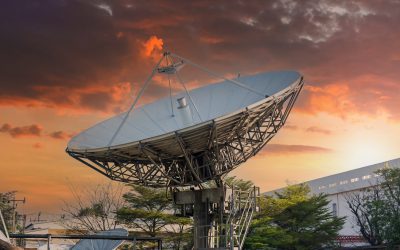Ham Radio, officially known as amateur radio, has a rich and fascinating history that spans over a century. This blog post delves into the history of Ham Radio, exploring its origins, evolution, and significance in the world of communication.
The Birth of Ham Radio
Ham Radio began in the late 19th and early 20th centuries with the pioneering work of scientists and hobbyists exploring the new frontier of wireless communication. Guglielmo Marconi, often credited as the father of radio, made significant advancements in the late 1800s by transmitting wireless signals over long distances. His work laid the foundation for what would become Ham Radio.
Early Experimentation and Development
In the early 1900s, amateur radio enthusiasts, or “hams,” began experimenting with wireless technology. These early hams were often self-taught and used homemade equipment to communicate over short distances. The term “Ham Radio” itself emerged as a nickname for amateur radio operators, though its exact origin remains unclear.
One of the first significant milestones in the history of Ham Radio was the establishment of the American Radio Relay League (ARRL) in 1914 by Hiram Percy Maxim. The ARRL played a crucial role in organizing amateur radio operators and advocating for their interests. It also facilitated the relay of messages across the country, proving the practical value of amateur radio in emergency communication.
Ham Radio in the Early 20th Century
The early 20th century saw rapid advancements in radio technology, and Ham Radio operators were at the forefront of these developments. During World War I, many amateur radio operators were called upon to serve in military communications, showcasing the importance of their skills and knowledge.
The Radio Act of 1912
In response to the growing popularity of radio communication and to address concerns about interference, the U.S. government enacted the Radio Act of 1912. This legislation required all radio operators to be licensed and assigned specific frequencies. This was a pivotal moment in the history of Ham Radio, as it formalized the hobby and established regulatory oversight.
The Golden Age of Ham Radio
The 1920s and 1930s are often referred to as the “Golden Age” of Ham Radio. During this period, technological advancements such as the vacuum tube made radio equipment more accessible and reliable. Ham Radio operators began to experiment with long-distance communication, or “DXing,” and the first transatlantic amateur radio contact was made in 1923 between operators in Connecticut and Scotland.
Ham Radio During World War II
The outbreak of World War II had a profound impact on Ham Radio. Many amateur radio operators were once again called upon to serve in military communication roles. In the United States, all amateur radio operations were suspended for the duration of the war, as the government prioritized military use of radio frequencies.
Post-War Revival and Growth
After the war, Ham Radio experienced a resurgence in popularity. Returning veterans brought with them valuable technical skills and knowledge, contributing to the growth of the hobby. The establishment of the International Amateur Radio Union (IARU) in 1925 helped to promote global cooperation and standardization among amateur radio operators.
The 1950s and 1960s saw further advancements in technology, including the introduction of single-sideband (SSB) modulation and the development of more sophisticated radio equipment. Ham Radio operators continued to push the boundaries of communication, experimenting with new modes such as frequency modulation (FM) and television transmission.
The Digital Revolution
The advent of digital technology in the latter half of the 20th century brought significant changes to Ham Radio. The development of microprocessors and personal computers allowed for the creation of digital communication modes such as packet radio, which enabled the transmission of data over radio waves.
The Rise of the Internet
The rise of the Internet in the 1990s had a dual impact on Ham Radio. On one hand, it provided new tools and resources for amateur radio operators, such as online forums, software, and digital communication modes like PSK31 and FT8. On the other hand, it posed a challenge as the convenience of internet-based communication led some to question the relevance of Ham Radio.
The Modern Era of Ham Radio
Despite the challenges posed by modern technology, Ham Radio continues to thrive in the 21st century. The hobby has adapted and evolved, incorporating new technologies while maintaining its core principles of experimentation, communication, and public service.
Emergency Communication and Public Service
One of the enduring strengths of Ham Radio is its role in emergency communication. Ham Radio operators, often organized into groups such as Amateur Radio Emergency Service (ARES) and Radio Amateur Civil Emergency Service (RACES), provide critical communication support during natural disasters and other emergencies when traditional communication networks fail.
The Advent of Software-Defined Radio (SDR)
The introduction of software-defined radio (SDR) has revolutionized Ham Radio by allowing operators to use software to control radio hardware. SDR provides greater flexibility and functionality, enabling hams to experiment with a wide range of frequencies and modes.
The Role of Satellites and Space Communication
Ham Radio operators have also made significant contributions to space communication. Amateur radio satellites, known as OSCAR (Orbiting Satellite Carrying Amateur Radio), have been launched since 1961, providing hams with opportunities to communicate over long distances and experiment with satellite technology.
The Future of Ham Radio
The future of Ham Radio is bright, with ongoing advancements in technology and a continued emphasis on education, experimentation, and community service. As new generations of amateur radio operators embrace the hobby, Ham Radio will continue to play a vital role in fostering technical skills, promoting international goodwill, and providing reliable communication during emergencies.
Educational Outreach and Youth Involvement
One of the key challenges facing the Ham Radio community is attracting and retaining young operators. Organizations like the ARRL and IARU are actively engaged in educational outreach, promoting Ham Radio as a valuable tool for learning science, technology, engineering, and mathematics (STEM) skills.
Innovation and Experimentation
Innovation and experimentation remain at the heart of Ham Radio. From exploring new digital modes to developing cutting-edge antenna designs, hams are constantly pushing the boundaries of what is possible. This spirit of innovation ensures that Ham Radio will continue to evolve and adapt to changing technologies and needs.
The history of Ham Radio is a testament to the power of human curiosity, ingenuity, and community. From its humble beginnings in the early 20th century to its modern-day incarnation, Ham Radio has made significant contributions to the field of communication and has touched the lives of countless individuals around the world. Whether you are a seasoned operator or a newcomer to the hobby, the story of Ham Radio is one of exploration, discovery, and connection.




